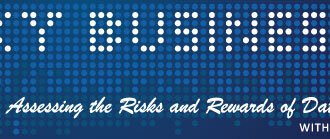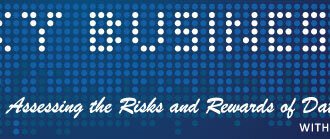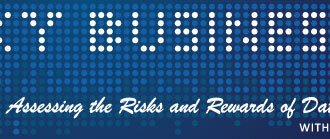
Like it or not, “people analytics” are here to stay. But that doesn’t mean companies should put all their eggs in one basket and turn hiring and people management over to the algorithms. In fact, while reliance on experience/intuition to hire “the right person” is rife with biases, there’s also danger in over-reliance on HR analytics to find and cultivate the ultimate workforce.

Like it or not, “people analytics” are here to stay. But that doesn’t mean companies should put all their eggs in one basket and turn hiring and people management over to the algorithms. In fact, while reliance on experience/intuition to hire “the right person” is rife with biases, there’s also danger in over-reliance on HR analytics to find and cultivate the ultimate workforce.
The human workforce appears to be ripe with promise for analytics. After all, if companies can figure out a better way to measure the potential “fit” of employees to various roles and responsibilities, subsequent productivity improvements could be worth millions of dollars. In this vein, HR analytics is the latest rage—where algorithms team through mountains of workforce data to identify the best candidates and predict which ones will have lasting success.
According to an article in Atlantic Magazine, efforts to quantify and measure the right factors in hiring and development have existed since the 1950s. Employers administered tests for IQ, math, vocabulary, vocational interest and personality to find key criteria that would help them acquire and maintain a vibrant workforce. However, with the Civil Rights Act of 1964, some of those practices were pushed aside due to possible bias in test formulation and administration.
Enter “Big Data”. Today, data scarcity is no longer the norm. In actuality, there’s an abundance of data on candidates who are either eager to supply them, or ignorant of the digital footprint they’ve left since leaving elementary school. And while personality tests are no longer in vogue, new types of applicant “tests” have emerged where applicants are encouraged to play games that watch—and measure how they solve problems and navigate obstacles—in online dungeons or fictitious dining establishments.
Capturing “Big Data” seems to be the least of challenges in workforce analytics. The larger issues are identifying key criteria for what makes a successful employee—and discerning how those criteria relate and interplay with each other. For example, let’s say you’ve stumbled upon nirvana and found two key criteria for employee longevity. Hire for that criteria and now you may have more loyal employees, but you still need to account and screen for “aptitude, skills, personal history, psychological stability, discretion”, work ethic and more. And how does one weight these criteria in a hiring model?
Next, presuming you’ve developed a reliable analytic model, it’s important to determine under which circumstances the model works. In other words, does a model that works for hiring hamburger flippers in New York, also work for the same role in Wichita, Kansas? Does seasonality have a play? Does weather? Does it matter the size of the company, or the prestige of its brand? Does the model work in economic recessions and expansions? As you can see, discovering all relevant attributes for “hiring the right person” in a given industry, much less role, and then weighting them appropriately is a challenge for the ages.
Worse, once your company has a working analytic model for human resource management, it’s important to not completely substitute it for subjective judgment. For example in the Atlantic Magazine article, a high tech recruiting manager lamented: “Some of our hiring managers don’t even want to interview anymore, they just want to hire the people with the highest scores.” It probably goes without saying, but this is surely a recipe for hiring disaster.
While HR analytics seems to have room to run, there’s still the outstanding question of whether “the numbers” matter at all in hiring the right person. For instance, Philadelphia Eagles coach, Chip Kelly was recently asked why he hired his current defensive coordinator, who had less than stellar numbers in his last stint with the Arizona Cardinals.
Chip Kelly responded: “I think people get so caught up in statistics that sometimes it’s baffling to me. You may look at a guy and say, ‘Well, they were in the bottom of the league defensively.’ Well, they had 13 starters out. They should be at the bottom of the league defensively.”
He continued: “I hired [former Oregon offensive coordinator and current Oregon head coach] Mark Helfrich as our offensive coordinator when I was at the University of Oregon. Their numbers were not great at Colorado. But you sit down and talk football with Helf for about 10 minutes. He’s a pretty sharp guy and really brought a lot to the table, and he’s done an outstanding job.”
Efficient data capture, data quality, proper algorithmic development and spurious correlations in too much big data are just a few of the problems yet to be solved in HR analytics. However, that won’t stop the data scientists from trying. Ultimately, the best hires won’t come exclusively from HR analytics, but will be paired with executive (subjective) judgment to find the ideal candidate for a given role. However, in the meantime, buckle your seatbelt for much more use of HR analytics. It’s going to be a bumpy ride.










